The Yorkshire Terrier is this month's featured breed and is petite in size with the heart of a lion. These little 'rockets' are a determined breed. They will always attempt to hold their own against any foe of any size, and always punch above their weight in the dog world.
History
The Yorkshire Terrier originated in Yorkshire and parts of Lancashire in the north of England. It was bred to deal with rat infestations in the clothing mills that thrived back in 19th century in Yorkshire, England.
In the middle of the 19th century, when work was plentiful in the north of England, many workers travelled down from Scotland to seek work in the Yorkshire clothing mills, bringing with them their own canine travelling companions.
Many of these workers brought with them several different species of small terrier type dogs. It was the mixture of these dogs and the selective breeding that followed, that culminated in creating the dog we know today as the Yorkshire Terrier.

Affectionately called a Yorkie, they are extremely popular with both lovers of small dogs and those who suffer allergies to dog dander, as the Yorkie does not shed.
Whenever Bark Busters is called in to deal with a behaviour problem with this breed, it is mainly because of their barking or because of their snappy controlling nature.
They may be small, but they have BIG personalities like most of the terrier types. They don’t back down for anyone or anything and are much loved because of their determination, mistrust of strangers and a size that is manageable if you live in an apartment, flat or small house.
Personality & Temperament
The Yorkshire Terrier personality or temperament is typically confident and outgoing, with an air of arrogance. It is an active breed, protective, curious, and always seeking attention. They have a very stable personality and are mentally alert and emotionally secure. They are not usually your typical lap dog, but quite willing to oblige when the urge takes them.
Later in this article, we do mention that the Yorkie will usually select one person to bond to and this is not usually the children. Therefore, very young children can be at risk of being snapped at, bitten and controlled by a Yorkie.
They make ideal companions for older family members, and in fact, many reputable breeders will only routinely home them to families with children older than about 8-years-old. This is both for the comfort of the dog, and the benefit of the child as Yorkie’s are not typically tolerant of younger children.
Yorkshire Terriers are trainable, as with any dog, if they are not over-indulged and spoiled. If they are spoiled, many Yorkies bark at the slightest noise and many dog parents find them difficult to control. Although tiny, they have a giant ego and won’t toe the line unless there is a strong leader in the home.

They are a highly intelligent and agile breed and will scamper to the front door before their owner. This can turn into a battle of wills while their human tries to grab them before letting visitors in.
Originally bred to control rats, they developed a fearless temperament which can be found in their aggressiveness to other dogs. They are always on the lookout for adventure and maybe even a bit of trouble. They love being the centre of attention surrounded by family members.
Yorkie’s fit well into most surroundings, they travel well and are adaptable to most family situations but best suited to a family that does not have really young children.
Management
If you are considering this breed, you will need to either possess a determined personality or a very tolerant one. The Yorkie will need management, especially when friends arrive, as they race to the door to see who is entering their territory, and to see if they approve.
They don't need an abundance of exercise but do love their walks. They should have regular controlled walks to help release some of their exuberance, but education and controlling their behaviour on the walks works best.

The very worst thing you can do with your Yorkie is to try to pick it up to control it or the situation, which is something that the parents of small dogs commonly do. This type of action can lead to getting bitten or dogs running away to avoid human hands.
They love their family, but they do like it to be on their terms. They like to rule the roost and to call all the shots.
They are one of those breeds that will have a favourite human in the household who they don't like to let out of their sight. This usually makes someone in the household feel very special, but the reality is, the person they select is usually someone they like to control.
This behaviour needs to be addressed or it can manifest into separation anxiety, which means, that barking, and destruction could occur the moment you leave them alone. You also need to be sure that there is someone you can leave them with in an emergency.
To establish yourself as a responsible leader, you will need to provide a comfortable "time-out" place, if you need to go to work or out for the evening. However, if your dog already suffers from separation anxiety when left alone, then you may need professional help and support to fix the problem.
In reality, you can't spend 24/7 with your dog. For this reason, we recommend that you practice some good management of your Yorkshire Terrier for those times when you are not able to keep them actively engaged or have them close by or sitting on your lap. You will need to provide some kind of entertainment for them, something that keeps them busy and engages their brain. Be sure to pick an activity that does not over-excite the brain.
If you have a busy lifestyle, then consider daycare or a dog walker. Always do your own research into the right people to care for your precious pet. Also check that they hold adequate insurance and have experience in dealing with this petite breed.
Also, check out what other breeds, and the size of the breeds, they may be walking at the same time.
Daycare centres can solve management issues, but Yorkshire Terriers won’t always be a good fit for these facilities because of their personalities, so do your research first and make sure that the facility you choose understands your dog's needs.

The Right Training for Your Yorkshire Terrier
You need to choose your type of dog training wisely. These are not an easy breed to train, and they need understanding, patience, and knowledge of their personality. You also need to consider the type of training that suits your dog’s intelligence. All dogs need consistency, direction and a reward for a job well done. This can be a treat or lavish praise. A recent MRI study by Emory University discovered that dogs prefer praise just as much as food and treats, with 20% of the dogs they tested preferred paise more than food treats.
Quote:
The next time you want to treat your pooch, you might want to consider giving it some kind words rather than a snack, because new research suggests that many dogs would rather get our praise than our prosciutto.
The first-of-its-kind study mixed brain-imaging data from canines with a series of behavioural experiments and came to the conclusion that dogs really do value the relationships they have with their owners. In other words, we're not just a means to get food.
"We are trying to understand the basis of the dog-human bond and whether it's mainly about food, or about the relationship itself," said neuroscientist Gregory Berns from Emory University.
Berns' team studied 15 dogs, with each animal being monitored through almost 100 separate trials. Only two of the dogs were found to clearly prefer food over praise from their owners, with the other 13 either preferring praise or appearing to like both equally.
Source: https://www.sciencealert.com/your-dog-enjoys-praise-more-than-food-according-to-a-new-study
Bark Busters Home Dog Training believes that a highly intelligent breed, such as the Yorkshire Terrier, needs to receive regular training and mind-stimulation for their intellect.
Trainers that come to your home suits their personality and addresses the behaviour problems they commonly have in the home or while out on their walks.
Dog behaviour problems like barking at the front door, barking at exterior sounds, snapping at other dogs or people in the household, can be overcome. Barking at people or dogs while out on walks and a refusal to come when called can be resolved.
Any training undertaken needs to be consistent, kind, dog-friendly and the type of training that takes your dog's personality into consideration.
Bark Busters training works for all breeds of dogs because it focuses on ‘communication’ and how dogs communicate with each other in their natural setting.
Capabilities
This is a highly inquisitive breed that will be up for anything, so don't let their tiny size fool you. They have a giant personality, and they will be leading the pack if you allow them. They are capable of doing almost anything other breeds can do.
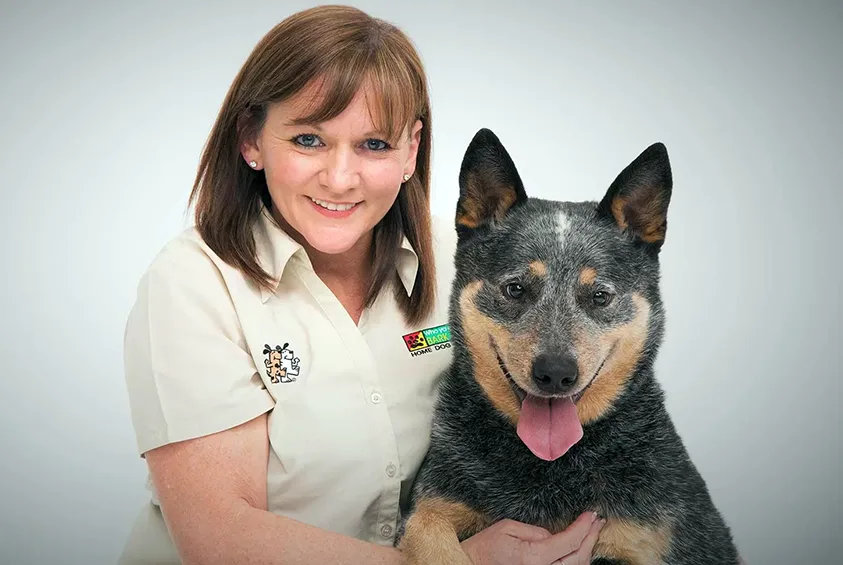
Donna Ryan, Bark Busters International Head of Training
This month I have a great story to tell that involves a rescued Yorkshire Terrier that we named Chowzie. He went on to perform on stage and completed 14 performances for the Illawarra production of Gypsy, a stage play in 1987.
We first encountered the Chowzie in 1987 when Sylvia Wilson, co-founder of Bark Busters, worked as a manager of the RSPCA. She was asked by the local theatre group to train a Yorkshire Terrier for the stage play 'Gypsy'. The little dog had very little to do on stage really, as its role in the play was just to be carried around throughout the whole performance. An easy role for a little dog you would think and an easy task for the trainers, Sylvia and Danny Wilson and myself.
Gypsy Bark Busters
The first job we faced was to find the right dog for the role and we knew it had to be a Yorkshire Terrier.
The RSPCA never, and I repeat, never had a Yorkshire Terrier surrendered to the Illawarra shelter in the ten years that my Sylvia had managed that shelter. This seemed like a daunting task, but still she put the wheels in motion.
She went to the local dog pound and told the pound manager about the breed of dog she was looking for and asked him to keep an eye out for one.
He laughed at her, telling her that he felt this was a hopeless task. He told her that he had never seen a Yorkshire Terrier brought into the pound in his 20 years.
A week later the manager of the shelter came into her office to bring her some good news. He told her that he could not believe her luck, but a Yorkshire Terrier had just been brought in and she should come and officially put her name down for it. However, he went on to say that he really felt that it would be reclaimed and pointed out that the pure breed dogs are not the type of dogs that people abandon.
Sylvia put her name down and waited the obligatory 14 days.
Sadly, after 14 days, no one claimed the little dog, so she went to collect him and she called him Chowzie, the same name as the dog in the play.
That was the good news. The bad news was this little dog hated people and most of all hated being picked up. It was now becoming clear why no one had claimed him.
We had our work cut out for us. Sylvia sat with the little dog in his pen for a couple of hours, finally winning him over before attempting to place a collar and lead on him. The big work of training him to 'like' people and to cope with being carried around was ahead of us.
Over the next few weeks, we spent time getting the staff to take turns at offering him treats while they carried him around. In no time, he began to seek people out and almost begged to be picked up.
One day, one of the kennel workers told Sylvia that when they let Chowzie into the exercise yard for a run, that it took them ages to capture him again. He flatly refused to come when they called him.
Sylvia asked the staff to let him out into the exercise yard again, so she could go and start some recall training with him. This training was the start of what Bark Busters does today and consisted of communication, lots of praise, accompanied by the appropriate body language.
"If you want a dog to come when it’s called, you must lower your height and use an enticing voice. You must never chase him because that only serves to make a dog run more"
After about 10 minutes, Chowzie was coming to Sylvia every time she called. For safety, she introduced a 'stop' command, which means, stop what you are doing and come straight back to me. All was achieved vocally and without physical correction or harming the dog in anyway.
That night Sylvia and Danny took Chowzie to his first rehearsal as my role in the training involved working on the on-stage performance.
Unbeknown to Danny and Sylvia, one of the staff had loosened Chowzie’s collar, as they felt it was a little too tight. As Danny went to get Chowzie out of the back of the car, outside the rehearsal hall, which was near a busy road, he slipped out of his collar and headed off in the direction of traffic.
Sylvia called out her 'stop command', that she had taught to Chowzie, and he immediately stopped in his tracks. She called out "Chowzie come" and he came back to her. She was convinced that if she had not carried out that little bit of training that day, that Chowzie may have been injured, or worse, on that busy road.
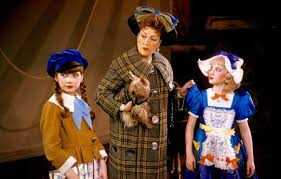
Chowzie completed 14 performances and won everyone’s heart. We found him a loving home after the show with a lady who lived on her own and wanted a lap dog. We knew that Chowzie would become the quintessential lap dog that would enrich this ladies' life.
I suppose the moral of the story is that it is vital that you train your Yorkshire Terrier to come when called, and other obedience training too. It could save their life, just like it probably saved Chowzie's life that night too.
Aggressive Guarding
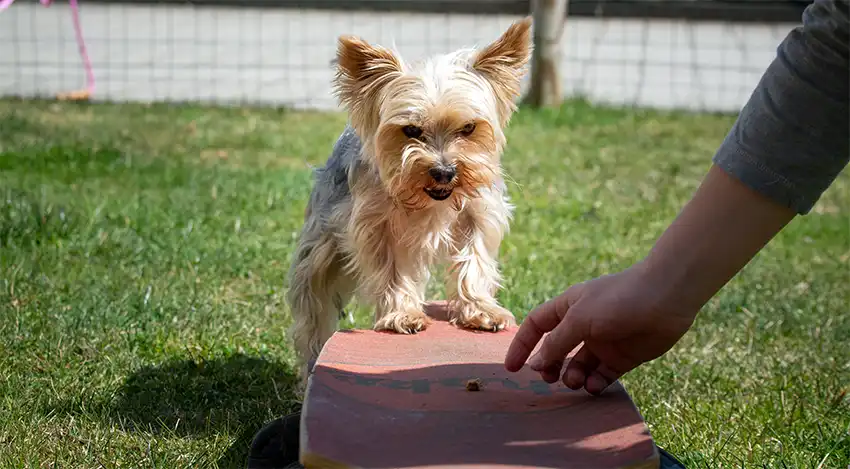
Some Yorkshire Terriers have a tendency to guard and some will show aggression with this behaviour too.
Case Study
Lucy was a 12-month-old Yorkshire Terrier that was adored by her adult family.
Lucy’s family told us that she was a well-behaved dog when she was at home. She never barked, she came when called, she loved her family and loved nothing more than spending time with them.
The only problem was they all worked long hours and they felt terrible about leaving her alone all week long. So, during one family meeting, they decided that she needed a play outlet and booked her into a nearby doggie daycare centre.
Her first day there was uneventful, but the next day and subsequent days, she became a big problem for the staff and management when she started to guard any toy or water bowl in the exercise area. She would growl and snap at any dog or human that came near. This was causing a big disruption in the daycare centre.
The owner of the facility rang the family and was threatening to ban her completely. Her family was worried because they would be back to square one and back to leaving her alone all day. If they could not get this issue fixed, this would be all that was available to them.
Bark Busters was called in to address her behaviour.
We started Lucy's training in the home as we knew that the root of the problem lay there. It was easy to see what was behind her behaviour at the centre. She was in complete control of her family at home, and everyone avoided her when she had a toy, was eating, drinking, or just anywhere there was an item she felt she could guard and should be hers. This is called "Resource Guarding".
This was a complete surprise to the family, but it was something they now had to face; she was not perfect.
We explained that the behaviour problem that she had at home, were all part of the issues she had at the daycare too. She needed education at home, and it had to come from her family. They all adored her, but they were way too tolerant of her antics and controlling behaviour. If they wanted to change her behaviour at the daycare centre, they needed to educate her on what was right and what was wrong.
Lucy was a great student and she responded very quickly to the resource guarding training we put in place. The family took a bit longer while they identified what she did at home that needed addressing.
We helped them through the process by first helping them create a list of do's and don’ts. Then we set about showing them how to address them in a way that Lucy would understand.
Soon, her bad behaviour had ceased at home and with the owner's approval we arranged a meeting with the doggie daycare management to explain how to address her behaviour at the daycare centre. In no time Lucy was their favourite guest.
Health

Everyday Illnesses and Injuries
Your Yorkshire Terrier’s health concerns will change over the course of their life. A puppy might be more prone to a leg disease while they’re still developing, a 2-year-old Yorkie may be more likely to show signs of dental disease, and a senior Yorkie is far more likely to develop arthritis as they age, which is contributary from the leg disease. Yorkshire Terriers also have personality and physical traits that may make them more prone to certain conditions. A bold Yorkie that leaps off the couch or porch to run around the yard may be more prone to rupturing their cruciate ligament.
If you are ever concerned about your dog’s health, your local veterinarian is a great resource, no matter how small the question.
Like many popular breeds, the Yorkshire Terrier has its fair share of hereditary problems like Legg-Calve-Perthes Disease and Luxating Patella. Most reputable breeders now have their breeding stock checked by a vet and scored for these hereditary ailments. You should request proof that the puppy you are purchasing comes from parents that have been checked and does not have any of these known issues.
Many other health issues are also hereditary, and you should do some research on the ancestry of your puppy and any health issues of that particular breed.
Many dog rescue organisations also check for common ailments before making them available for adoption.
Training
Be mindful, that any type of training you wish to undertake with your dog requires patience, direction, and know-how. We speak to many dog parents who tried their own training regime, and they tell us that they wished they had done more research before selecting a training regime. Many people don't research the training methods available to them and they start their dogs on the wrong track.
For example, just focusing on obedience training is not always the answer, especially if your dog has behaviour problems. A dog with behaviour problems will need expertise and know-how, or the behaviour can worsen.
We speak to many people who tell us that they started a training regime, only to find that this made their dog’s behaviour worse and compounded the problems, or they were told that their dog was beyond help. Please remember that no dog is beyond help!
There are many different types of dog training available, such as treat training or clicker training as well as other types that use force or pain.
The Bark Busters training approach employs communication, praise, and body language, aimed at emulating the way dogs naturally communicate. We effectively speak to dogs in a way they understand, and they respond quickly. We train in the home, we teach owners how to train their dog's brain and to look for comprehension, cooperation and understanding from their dog. Why in home? Well, this is where most behaviour problems start and occur, where a dog is most comfortable, less stressed and able to concentrate and focus.
We believe that hands should only be used to pet and praise your dog and that no dog should ever fear being touched by their owner's hands.
Treats might be one way to make the experience a pleasant one and might achieve that goal, but many dogs either come and take the treat and run off or they don’t care because they are not motivated by treats, and their human’s requests are ignored.
Many tell us that they love what we do and are pleased that it does not need to involve the use of treats as they hate the thought of having to carry a pocket full of treats. They prefer to be able to utter a few simple commands and have their dog stop in its tracks, return to them, and actually love them for who they are, not what they are holding in their hand. Either way, the treats have their limitations, and treat training does not offer the complete answer for all dogs.
Bark Busters training is the right fit for an energetic breed like the Yorkshire Terrier.
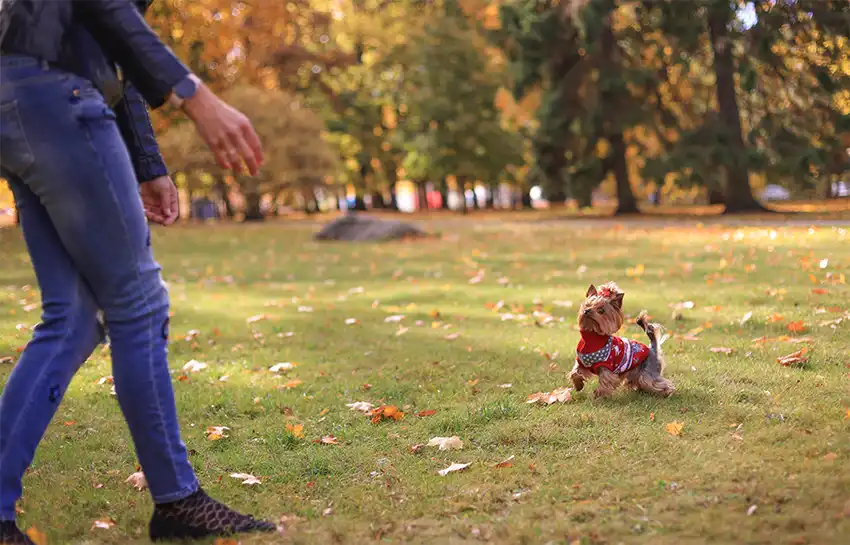
Recall - coming back when called
When we identify issues with recall or a dog that refuses to return when called, we invariably see situations where the human has sent the wrong messages to their dog.
The most common mistake is when people call their dog using only their name. They generally demand that their dog return, using harsh voice commands, which may frighten the dog or they try to grab their dog's collar or tackle their dog out of frustration.
If you want your dog to return when called, negative reinforcement will not work. You must reassure your dog that it won't be punished when it does finally arrive. Your dog must feel that it can approach you without fear or concern.
It is probably not your intention to scare your dog but is an unforeseen consequence of harsh tones and a misunderstanding of how your dog comprehends your actions.
When calling your dog, it must first want to be with you, then it must want to stay with you. How you react when your dog approaches will depend on whether they want to stay and spend time with you.
It is very important to keep the invitation to approach you appealing, in a high-pitched enticing voice, and lower your height. Don’t forget to offer lots of praise when they arrive.
Don’t reach out or try to grab their collar, or try to hold onto them, because this will cause your dog to try and avoid your hands and just want to escape.
Never chase your dog. That will only cause your dog to run away or turn it into a game. It is better to run or move backwards, lower your height, or even lay down.
Your dog must be treated as if it’s just done the most amazing thing when it comes to you and if it receives the appropriate reward of praise and kindness, it will always want to repeat that exercise.
Barking
We get lots of calls, from pet parents of Yorkshire Terriers, who's dog is barking. Yorkies are prone to barking and controlling their family. They are high on the list of breeds that are barkers and control biters. They want to know everything that is going on and control the whole household. They want to choose who enters the den and what they do while they are there.
Generally, their size creates more tolerance from their family, but some dog owners are at their wits end and cannot take it anymore. Barking in the car, barking at people on bikes, barking at joggers, and barking at passers-by, is high on the list of behaviour problems that Bark Busters training addresses with this breed.
Dogs do not have great distinguishing abilities. They see something whizzing past or hear a noise outside their home and it concerns them. The Yorkie barks to let anyone nearby know this is their territory and that they need to go on their way.

Barking at passersby in your home
Try to limit your dog's exposure to windows and limit their access to front door areas This is where they are more likely to protect that area. Things like doggie doors or crates and dens can assist you to control the barking.
Barking problems should always be addressed when they happen as it is too late if they have already happened, and preferably when your dog is not in an adrenalized state.
To address barking, it must be done when they are in the act of barking. Let them know, via communication, that what they are doing is wrong. You should never try to address any behaviour after the fact or try to punish your dog with smacks or threatening behaviour. This will only lead to other unwanted behaviour such as biting or aggression.
Barking on the walk
It is important to adequately addressed barking problems indoors with success and then you should be able to transition that control outside. If your dog is still barking at passersby, then it will be difficult to stop the behaviour outside the home. The big difference will be that your Yorkie will be on a lead and possibly feeling braver since you are along for the ride. It's about safety in numbers and two is better than one.
Dogs have a natural response, known as 'flight or fight'. When a dog is on a lead, it has no 'flight' option. It only leaves the 'fight' option. We should qualify this by also saying that we have never seen a Yorkshire Terrier ever run away from a fight.
If you dog is barking at people outside, using dog obedience commands such as "sit" or "down", when on a walk, only serves to make your dog feel more vulnerable.
When your dog is barking at people or other dogs, use your vocal communication to indicate to your dog that you are not pleased with his behaviour against the approaching person or dog.
Many dogs will increase their aggression if they think that their human is backing them up. This stems from the human's inability to correctly relay their feelings to the dog. Remember, your dog does not speak your language; it speaks dog.
Puppy Selection
 There are many places to acquire a puppy, but the right breeding and temperament are vitally important if you want a hassle-free dog.
There are many places to acquire a puppy, but the right breeding and temperament are vitally important if you want a hassle-free dog.
First check out the local Breed Specific Rescues, animal welfare shelters, Humane Society, and RSPCA’s as they have many great dogs looking for homes, who through no fault of their own, have ended up at a rescue or animal shelter.
You may not know their breeding or history, but these organisations test their dogs for temperament and soundness, and we fully support all the great work they do for animal welfare.
You will also be doing a good deed by giving a needy dog or puppy a forever home. When you are at the shelter, try to avoid selecting the fearful or over-zealous puppy, but at the same time, consider that the dog might just be traumatized by their surroundings.
Animal Welfare and Rescues do amazing work in trying to save dogs and match breeds to the right owners. Many of our Bark Busters trainers volunteer their services at local shelters and rescues to assist in rehabilitating dogs.
Select the Right Puppy-One that Suits Your Lifestyle
If you do choose to go to a breeder, then try to view both parents to determine the puppy's personality and to observe any behaviour problems they might have.
View the interaction of the puppies with each other and their reaction to visitors, as that will tell you a lot about their personality and temperament. Avoid the bullies or assertive types if you want a dog that is going to have an easy-going personality.

Tips for Bringing a New Puppy Home
Do not bring a puppy home before it has reached at least 8 weeks of age, but preferably 12weeks of age is better. Any earlier and they will miss out on much needed bonding with other pups and their mother.
Bring your puppy home early in the day, allowing time for your puppy to settle into its new home. Try to bring some bedding with the scent of the mother dog, scent of other litter mates, or a familiar scent.
Know where your puppy will sleep and introduce your puppy to this area during mealtimes. If you are using a crate or pen, be sure to address any barking, while hidden close by, without returning to the puppy. Returning every time your puppy barks will only encourage more barking. Puppies do better if they know you are there nearby and you have not deserted them.
Make sure you have the same diet your puppy was being fed on with its mother. Any diet change must be a gradual one or this will cause an upset stomach.
Ensure that you puppy proof your house and place all electrical cables and poisonous chemicals out of harm's way.
Make sure you provide lots of toilet breaks. Take your puppy out to toilet at least 8 times per day; after sleeping, eating, drinking and any exuberant exercise.
Toilet Training

Without a doubt, toilet training a puppy has its challenges and can try your patience. You need to be patient, observant and begin as soon as the puppy is home with you. When puppies are first born, they relieve themselves in their den, but their mother is there to clean them. Therefore, there is no scent of urine or faeces where the puppies eat, sleep and play. As they get slightly older, they learn to imitate the mother when she goes outside. This way the puppy becomes conditioned to never eliminate in their dens. If you are crate training, you will find that puppies will avoid toileting in their crate at all costs. If you have a puppy that is toileting in their crate or pen, then it could be that you are not taking it out for toilet breaks often enough, or the puppy was removed from its mother too early. Knowing when your puppy is likely to relieve themselves by reading their body language is the key to success.
Have you ever taken your puppy outside for a walk only to find they relieve themselves as soon as they get back indoors? To avoid this, walk your puppy directly to the area you have designated a toilet. Stand still and stay with them, so the puppy no longer shows interest in you. Do not sit down as this will only encourage the puppy to jump on you and forget what they are there for. Praise when they toilet.
NEVER scold or rub a puppy's nose in any mistakes, as this will teach your puppy to move out of sight or wait until you are not watching.
Your puppy does not possess human logic but will begin to form good habits through consistent and structured routines. Positive reinforcement when they do the right thing in the right place is the best and quickest toilet training method.
Crate Training
One of a dog’s basic needs is for shelter, its own space or den. Most dogs live indoors with their human family and so they have shelter from the extremes of heat or cold, or from wet weather. Having your dog living indoors also means that they are part of your family unit and addresses their fundamental need to be part of a pack.
However, very often dogs need a little extra in terms of shelter. At the very least, most dogs like to have their own bed where they can retire to and know that they won’t be disturbed. Some dogs appreciate something more than this. They like a small dark space to go to where they feel safe. This is where a crate can be useful and fills a dog's need to have its own den. It also assists in the management of young dogs who are destructive or fearful of storms and fireworks etc.
By providing a crate, making it comfortable and cosy inside, and covering it with a blanket, you are giving your dog a dedicated small space. This is a space just for your dog, where they can feel safe, and doesn't have to share it with a human.
How to select the right crate for your dog
Many dogs love a crate and will naturally seek it out. Source one that is small enough to be cosy but allowing enough room to stand and turn around. Don't make it too big though. If your dog’s precious toys are also in the crate, then this only adds to the feeling of security. Some dogs may be unsure at first so choose somewhere to set up the crate that is accessible but not too busy, and leave the door open so that your dog can enter and exit as often as he wishes. Every time he enters, you can introduce a phrase such as 'on your bed', and praise or reward them once in it. Allow them to come out and repeat the exercise until they are confident and comfortable about this new 'den'. You could try to introduce the crate at feeding times and feed your puppy in the crate. This will help to create a positive association with the crate, and it will let your puppy know that they can eat undisturbed by other pets or children.
Only when your puppy is happy to enter and remain in the crate, can you start to close the door for short periods. This could take several days or even a week or two. You should never close the door if your dog is getting stressed. Your puppy needs to feel comfortable with the crate first. You can try closing the door for short times when they are eating or, especially if introducing a crate to a puppy, whenever they are having a nap during the day. Gently place your puppy in their crate and close the door. Your dog will soon become confident that it is safe and that you will be available to release them when they are ready to come out. You can gradually increase the length of time to wait before releasing your puppy.
However, not all dogs like crates and they may never become accustomed to being in a crate. Stick to your training plan whilst your dog becomes accustomed to the crate, but if your dog panics they could harm themselves. Open the door and let them out and go back to having the crate door open again. We don’t recommend forcing your dog into a crate that they are clearly uncomfortable with. Some dogs may never take to it.
Never leave a dog unattended in a crate for long or extended hours. Four hours should be the maximum a dog is in a crate and there should be at least an hour before placing your dog back in the crate. Leaving your dog for long periods is unfair and could lead to barking or toileting issues.
Properly managed, crates can assist with toilet training and dogs love them if they are covered on all sides with the from left uncovered. It's just like their very own den.
Four Basic Needs
Let's examine those four basic needs and why your dog needs them to keep it healthy, balanced and content.
Food - diet / nutrition
We promote a diet that is grain free, low in carbohydrates and without any harmful e-numbers, colours and preservatives. Carbohydrates do add energy that the dog needs to burn off and can make an already hyperactive dog more active.
The right diet, grain free and filled with fruits, vegetables and raw meat will have advantages to how your dog will feel, look and act.
If you want to understand why grains can make a dog more energetic, you only need to think of racehorses and how their trainers give them grain to get highly energetic racehorses. Energy in, equals energy out.
Bark Busters dog trainers are not vets or dietitians, so we urge you to do your own research into the best diet for your dog. A diet that you will be comfortable with.
We do however have vast experience at how highly concentrated grain diets effect behaviour and can cause hyperactivity. This is very prominent in Japan, where most dogs are fed high levels of rice in their diet which can adversely affect concentration and focus.
Safety - through leadership and education
All dogs need strong leadership and to know where they fit into the family unit. If they know they have a leader that will make all the decisions, one who is fair and just, they will be happy and content.
On the other hand, if they have no structure in their life, they have inconsistency, and don’t know how things will be from one day to the next, then they will become stressed and may experience health ailments, skin and stomach issues and behaviour problems. Routine and respect must be established. With equal doses of love and structure your will feel safe and secure.
Shelter - a place to call their own
Dogs love nothing better than to curl up on the couch or in a place they can call their own, even when there is more than one dog. Most dogs are very sociable, and they will think nothing of all snuggling in together. Provide your dog with its own "den", a place where they can call home, and somewhere they can go to for a bit of peace and quiet. Just make sure their "den" is warm, easy to clean and maintain.
Entertainment - toys & games
A very important part of your dog's four basic needs is their need to have something to do. If we want to avoid our pets becoming bored and destructive, then they need a way to fill their day.
Dogs thrive with physical and mental exercise. Dogs are highly intelligent animals, and they need to keep their brains active as much as their bodies. Entertainment is an important part of their well-being and essential to your dog's overall mental health.
One great toy is the Bark Busters GameChanger® which helps to prevent boredom, stress, and separation anxiety. By filling it with small treats, your dog will have plenty of fun trying to get the treats to dispense.
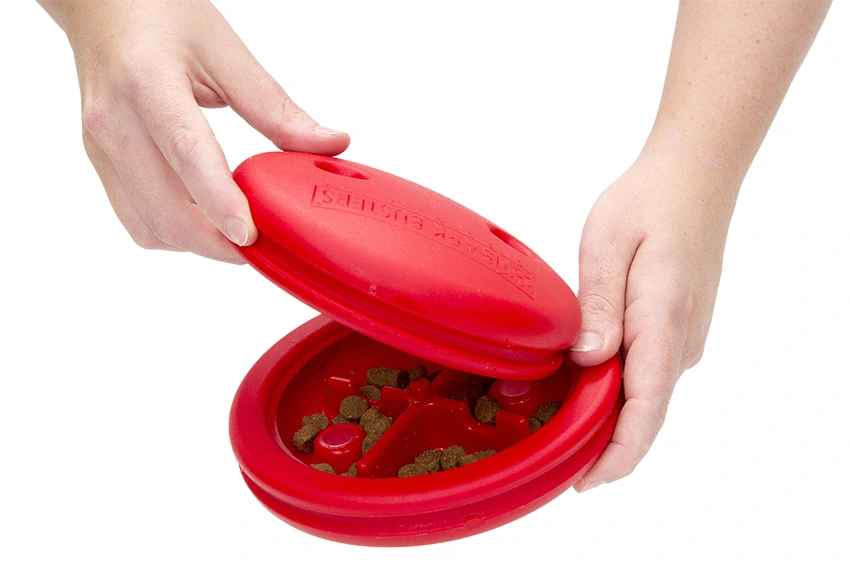
Games to Play
What are the right games, you might ask?
Don't play any games that involves rough and tumble as this only encourages biting.
'Tug of War' is okay and playing ball is good, provided your dog is not the type that gets fixated on the ball and refuses to stop playing when requested. Hide and seek is a great game too. These are games where you hide things from your dog, like toys or a tennis ball or treats and then encourage them to find them. You can increase the degree of difficulty as your dog gets better at the game.
Start out where your dog sees you hide the item, then repeat over and over, 'Seek' which is a good command to use for this exercise. Remember to give a lot of praise when they find it. These types of games are more calming for your Yorkie, than those type of games that encourage your dog to become over-excited or teaches them to bark or bite hands.
Child’s Play
Yorkshire Terriers are not typically tolerant of young children so they need to be controlled when around babies or toddlers or they might nip at them. They are highly intelligent and do learn quickly, so spend time educating them as to what is good and what is not. If you are patient and understanding of their capabilities, you will be able to enjoy many great times as a family with your dog.
Dog Parks
With today's dog owners having such busy lifestyles, more and more of them are turning to dog parks as a way of socialising and exercising their dogs. While this is great fun for most dogs and dog owners, not every dog will do well in this environment.
Yorkshire Terriers like to take on all comers and want to be the boss of the park, which can cause problems. They are high energy and can be quite controlling. This can lead to fights.
If you are determined to take your dog to a dog park, it is best to research a park where they match the size of the dogs.
Any fight where a Yorkie is involved is going to have a bad outcome, as they will usually be the smallest dog in the fight. Their risk of serious, life-threatening injuries are high.
Most of the dogs at the dog parks have no prior relationship with each other and are in a highly adrenalized state and in a highly stressed environment, so fights invariably break out.
The best way to prevent this behaviour is to be sure you have strong voice control over your dog in low, medium, and high-level distraction environments before attempting to visit a dog park. Try visiting the dog park in off peak hours and practice gaining control and focus from your dog, before you allow them to run off and play.
Bark Busters Lifetime Support Guarantee
Bark Busters dog behaviour therapists and trainers have trained more than 1 Million dogs worldwide and are renowned authorities in addressing dog behaviour with all-natural, dog-friendly methods. The Bark Busters training is the only service of its kind to provide International dog training guaranteed lifetime support. With hundreds of trainers around the world, Bark Busters continues its mission to enhance the human/canine relationship and to reduce the possibility of maltreatment, abandonment and euthanasia. Contact your local Bark Busters dog trainer to see how they can help.
This article is the copyright of Bark Busters® and is intended for information purposes only. Dog owners should fully research any problems that they may have with their dogs.

